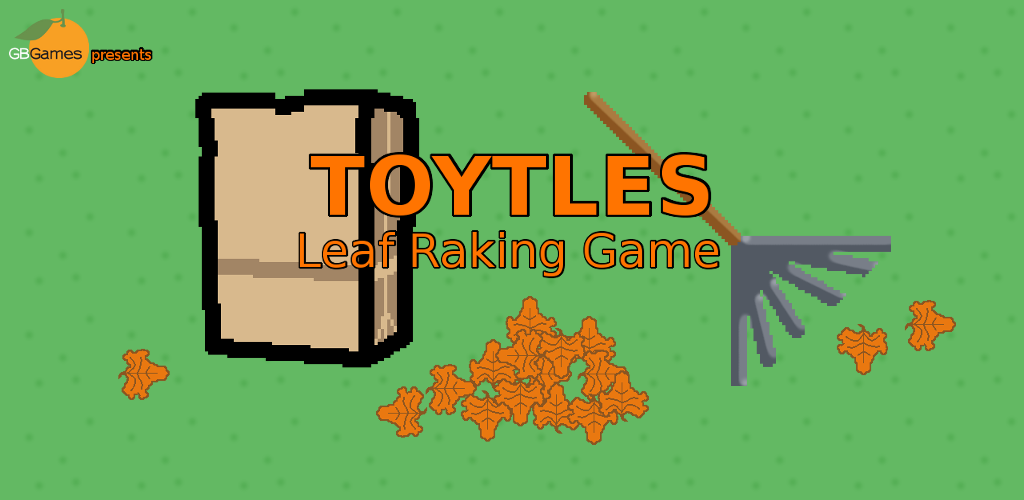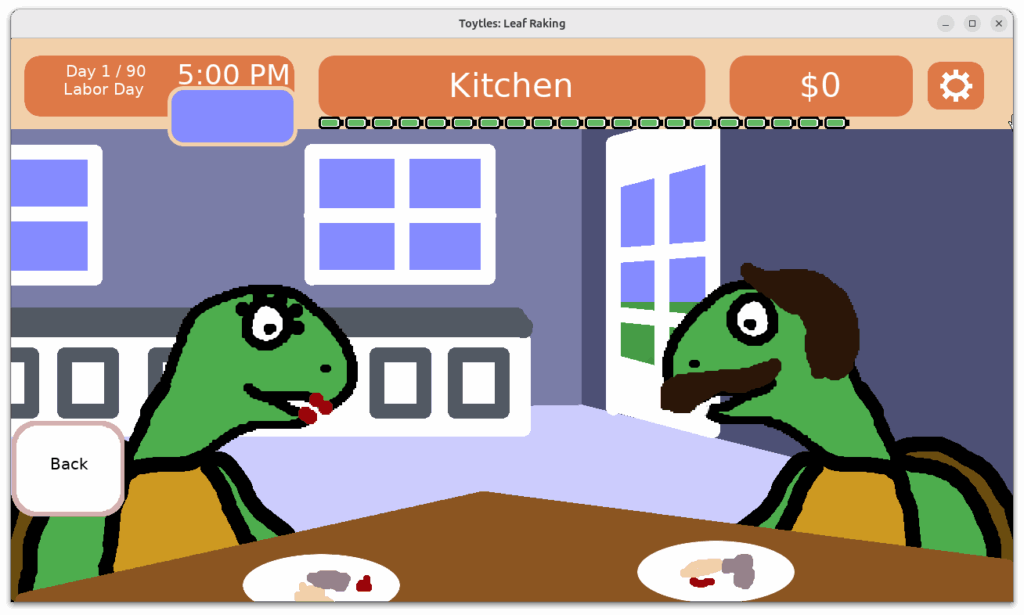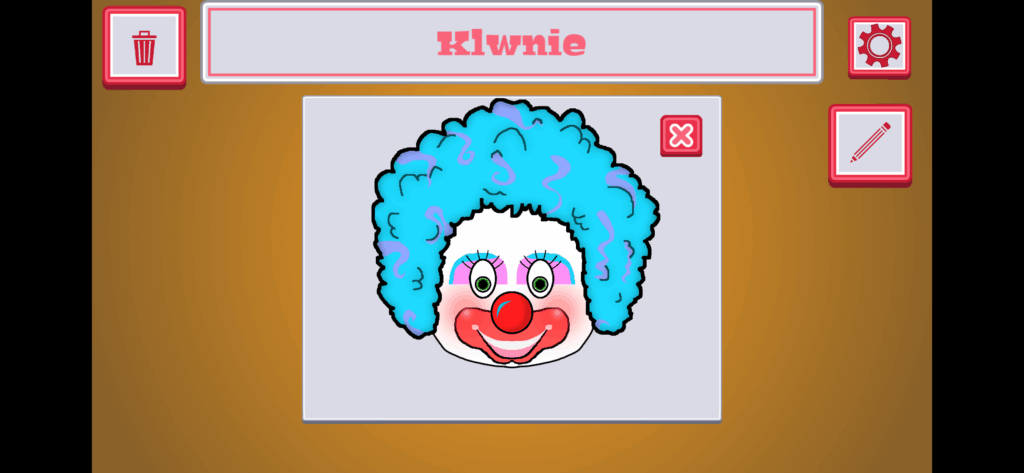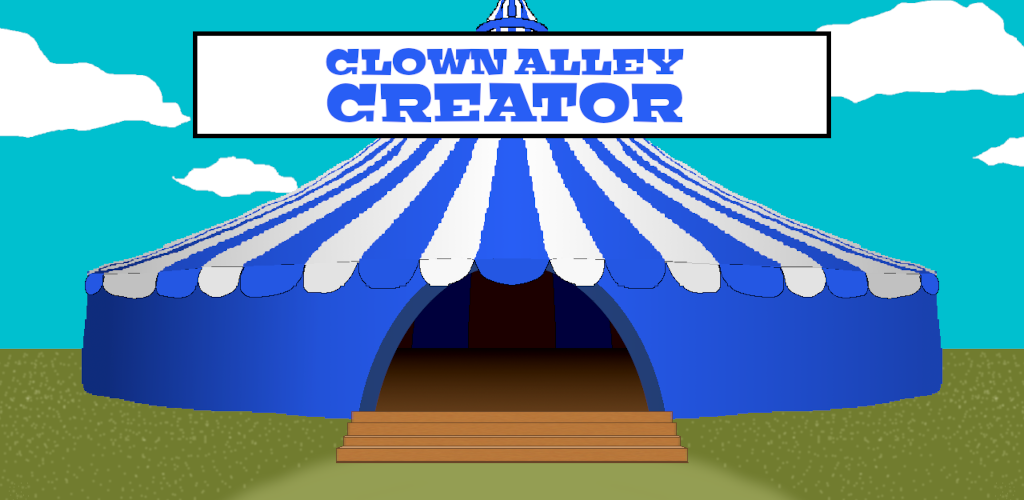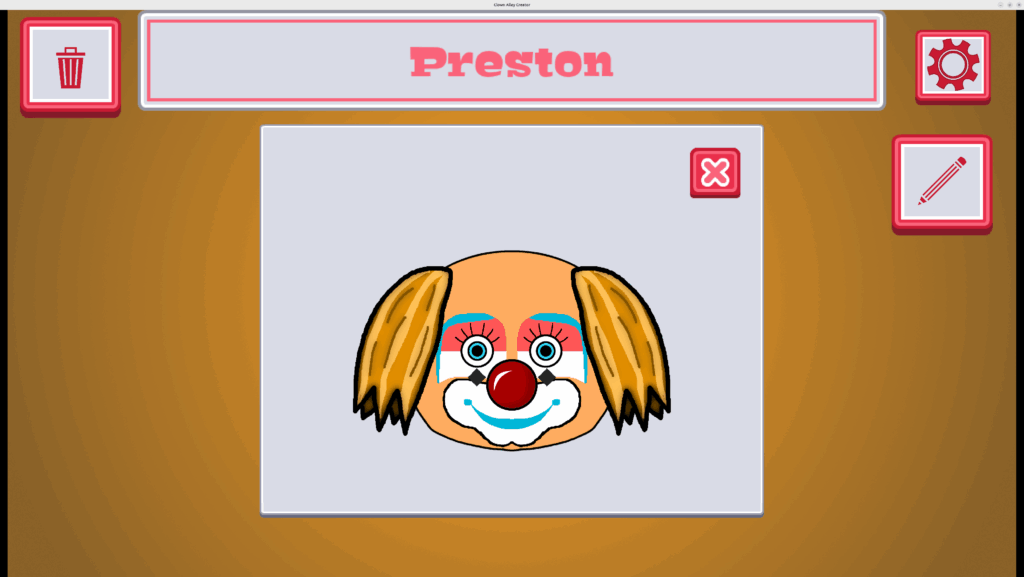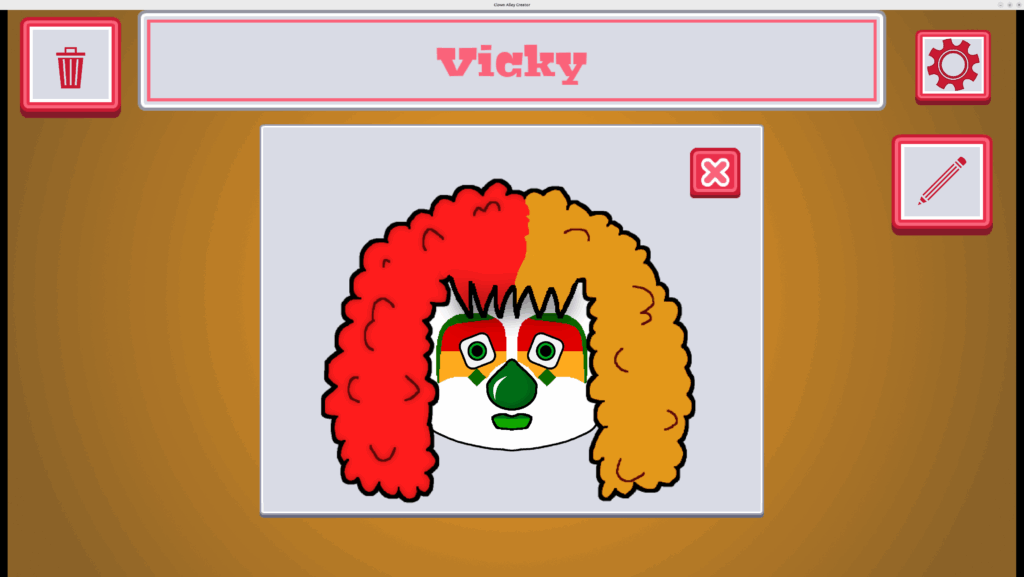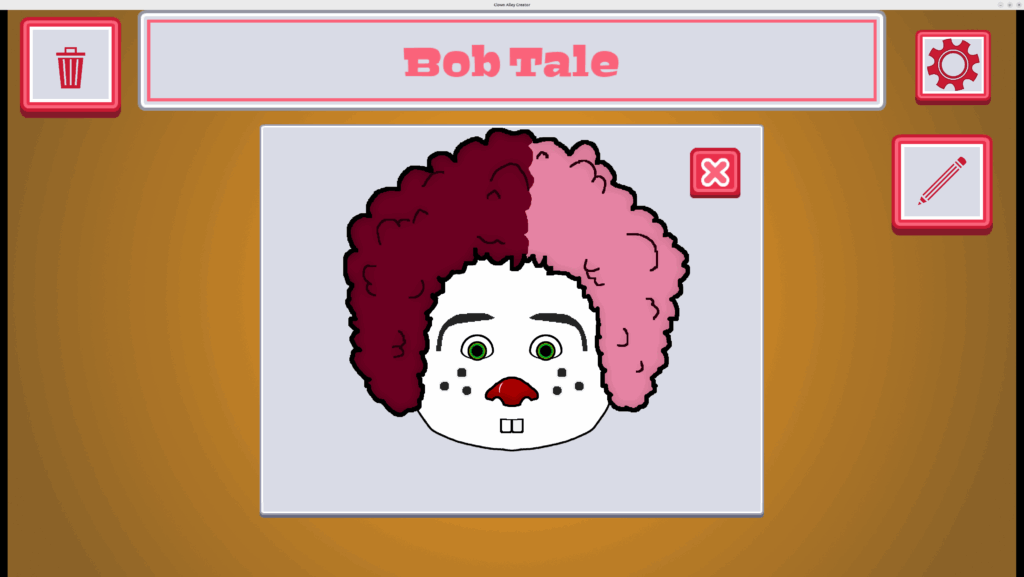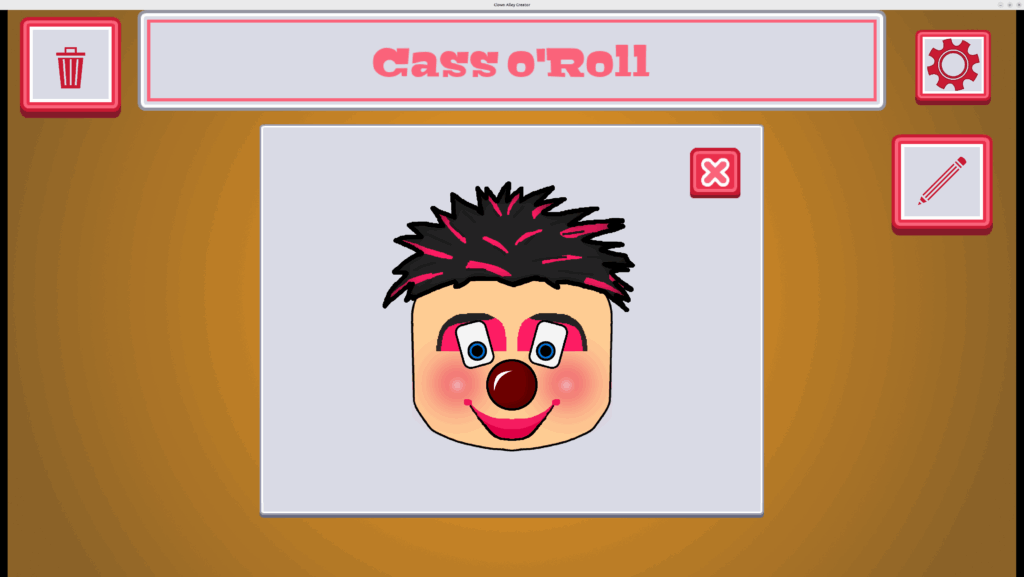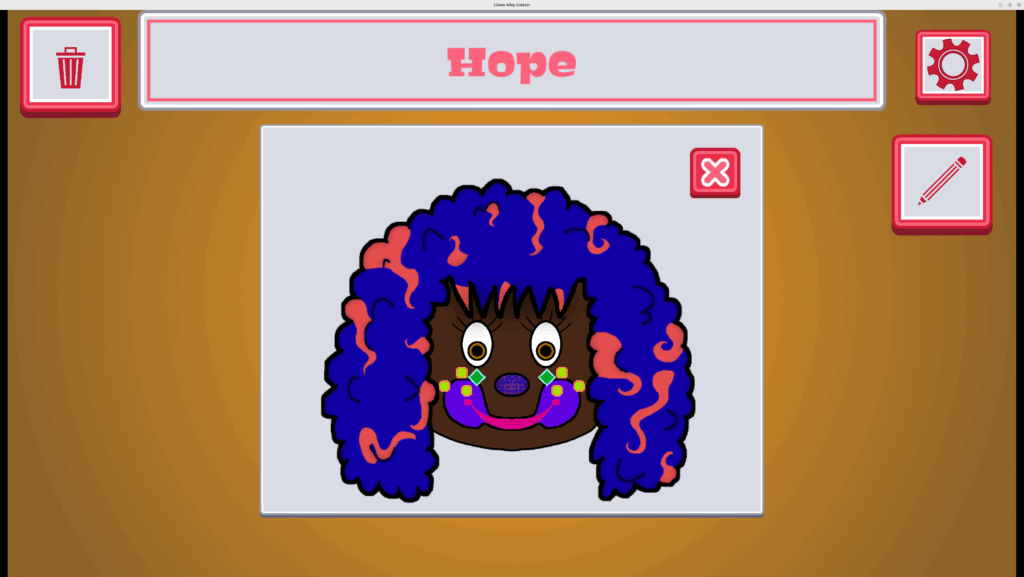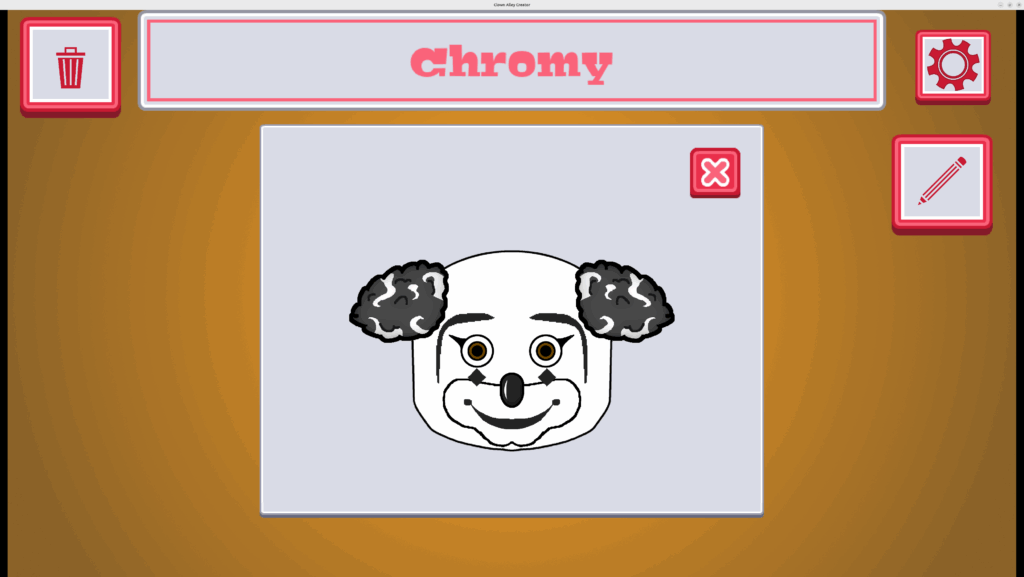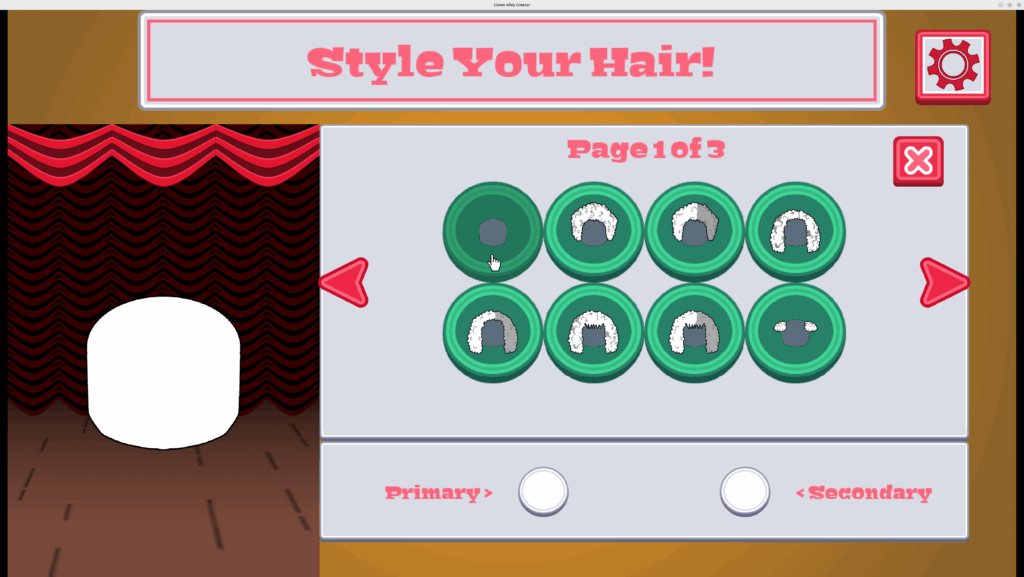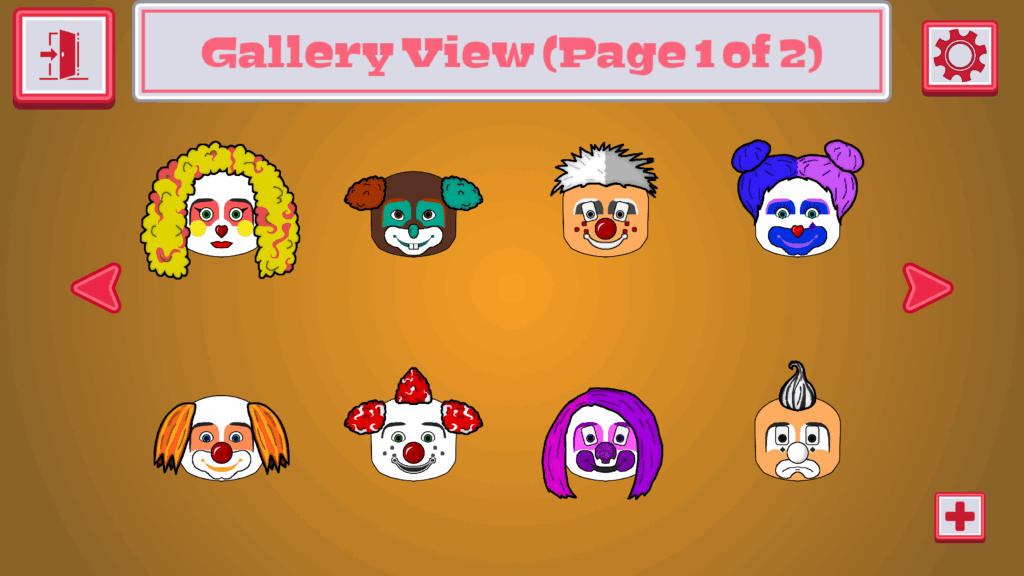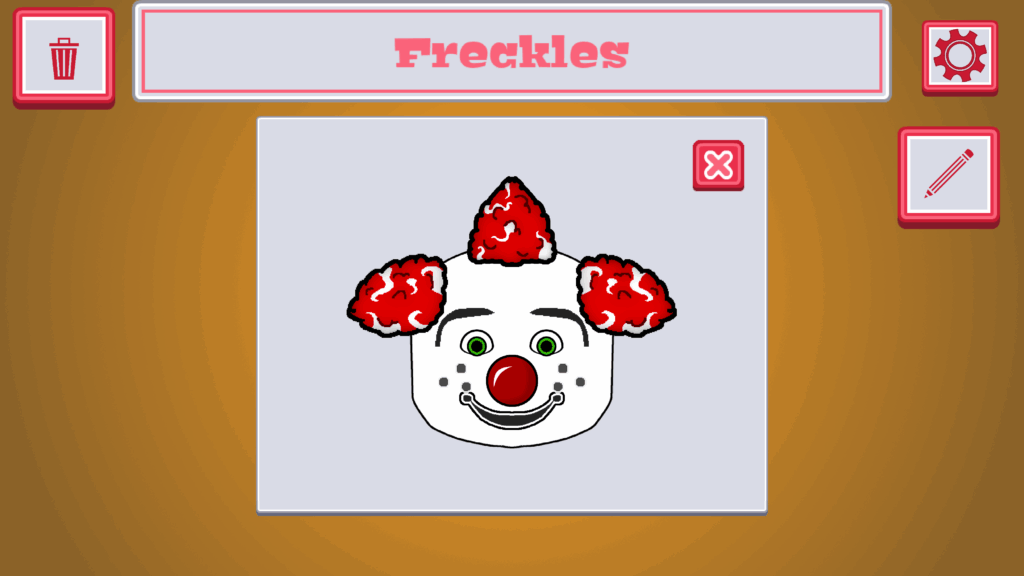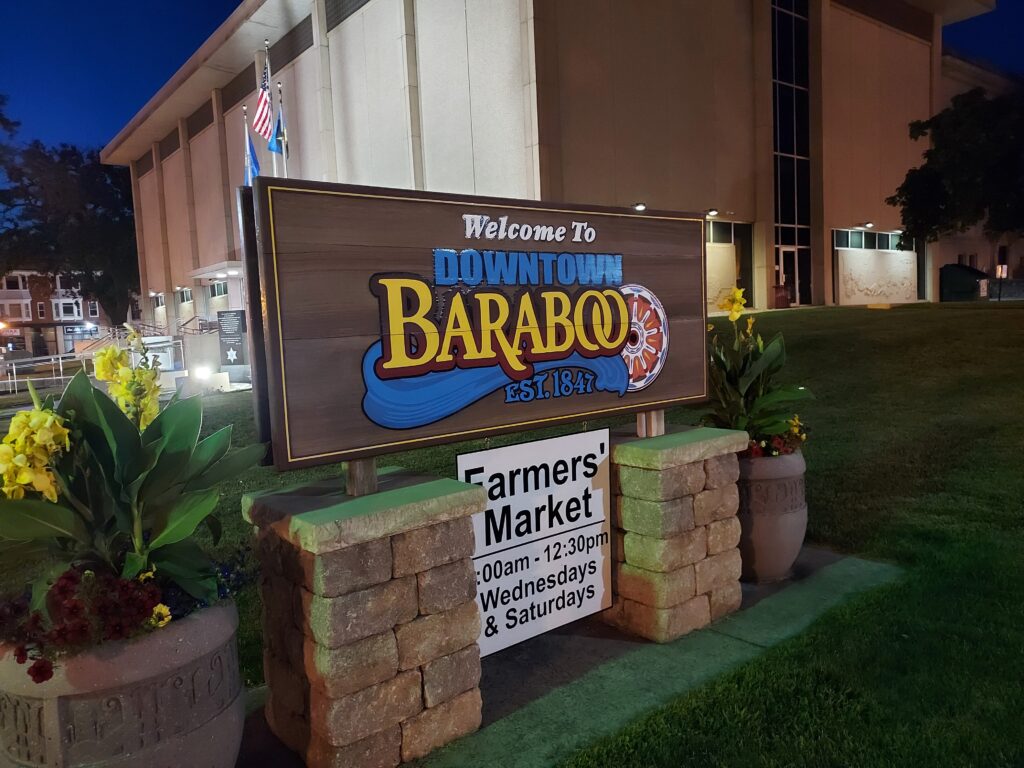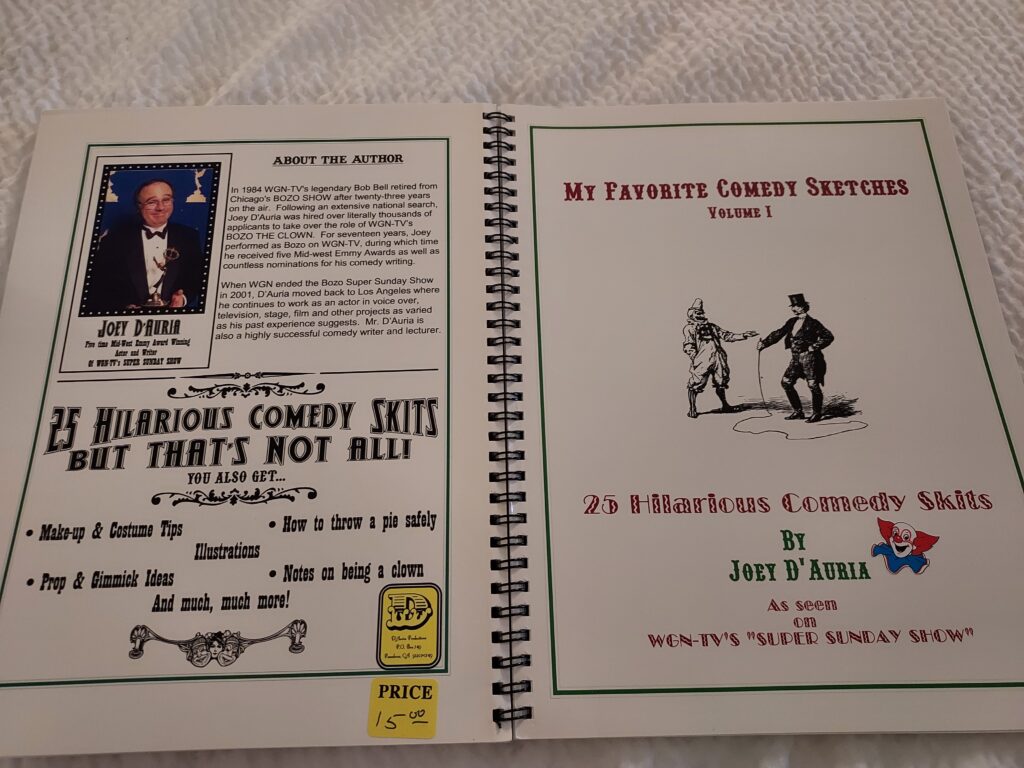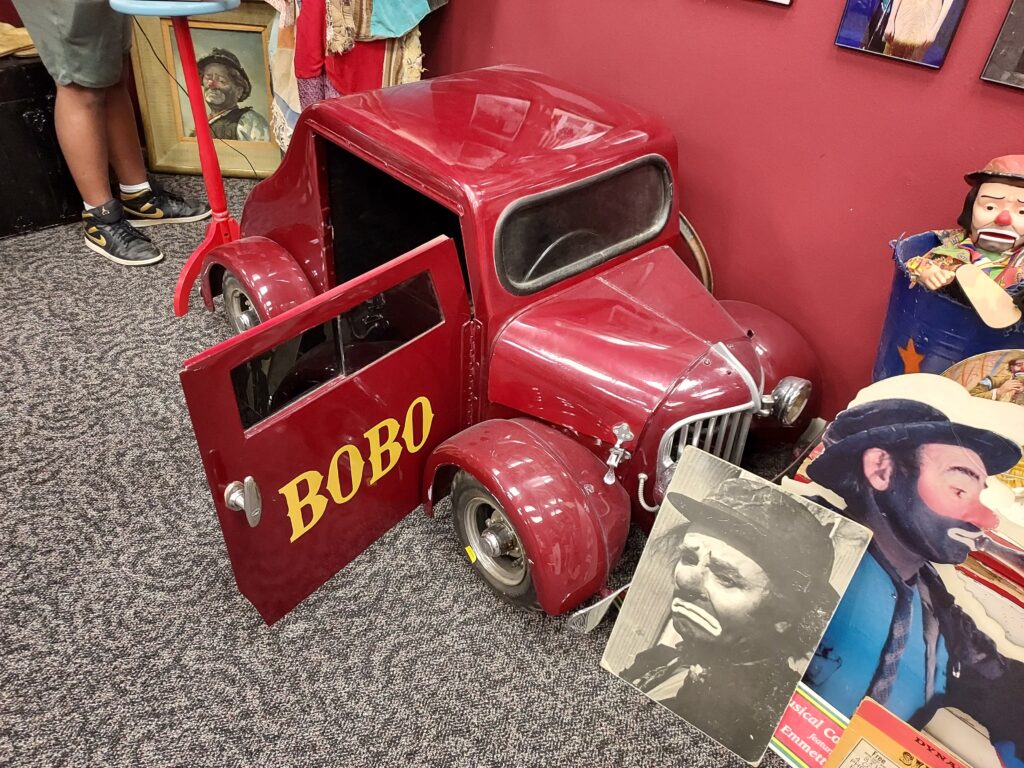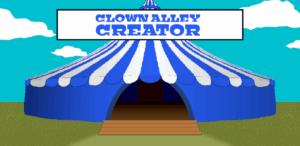First, don’t forget that I’m asking for fan submissions for Clown Alley Creator. Send me your clowns, and I might share them here and on social media! See details at that link.
In my previous report, I broke down some of the ideas I had for a Major Update(tm) for my strategic leaf-raking business simulation game, Toytles: Leaf Raking, into a few major categories.
This past week I had other priorities for my time and energy, so I didn’t make much progress on fleshing out the plan, but I did find myself chatting with a few people about what I am trying to do.
And it got me thinking about all sorts of things, such as:
- What is the exact impact that I hope to have with this Major Update(tm)?
- How much time do I want to commit to it?
- Should I look into contracting an artist, which will cost money but save time (hopefully)?
- Does one big release make sense, or should I break it up into frequent, smaller releases?
- Even with the new look and feel I hope to go for, how do I find customers who want to play it?
No matter how big of a Major Update(tm) I want to do, I am confident that I can create a solid game development project plan for it.
But how do I determine how big of a Major Update(tm) to do?
Because I also have to think about opportunity cost: time spent on trying to improve the appeal of Toytles: Leaf Raking is time not spent making a new game.
The faster I can make this update, the sooner I can put it out there and promote it.
But I don’t work on GBGames full-time (yet), so I know that there is only so fast I can go. It takes me months to do what a full-time game developer might do in days or weeks, which means that while I might want to only dedicate a month, realistically I might find that I would put hardly a dent in the update in that time.
In the end, I’m trying to determine how much I want to invest in this Major Update(tm). It’s hard for me to determine because I do not have a ton of market research and insight that justifies such an investment.
It is entirely possible that my strategy game about running a leaf-raking business aimed at pre-teens and teens won’t benefit significantly from significantly improved production values. I want to see what happens if it does, but I also recognize that I don’t want to spend years of effort on it.
Thanks for reading, and stay curious!
—
Want to learn about future Freshly Squeezed games I am creating? Sign up for the GBGames Curiosities newsletter, and download the full color Player’s Guides to my existing and future games for free!

